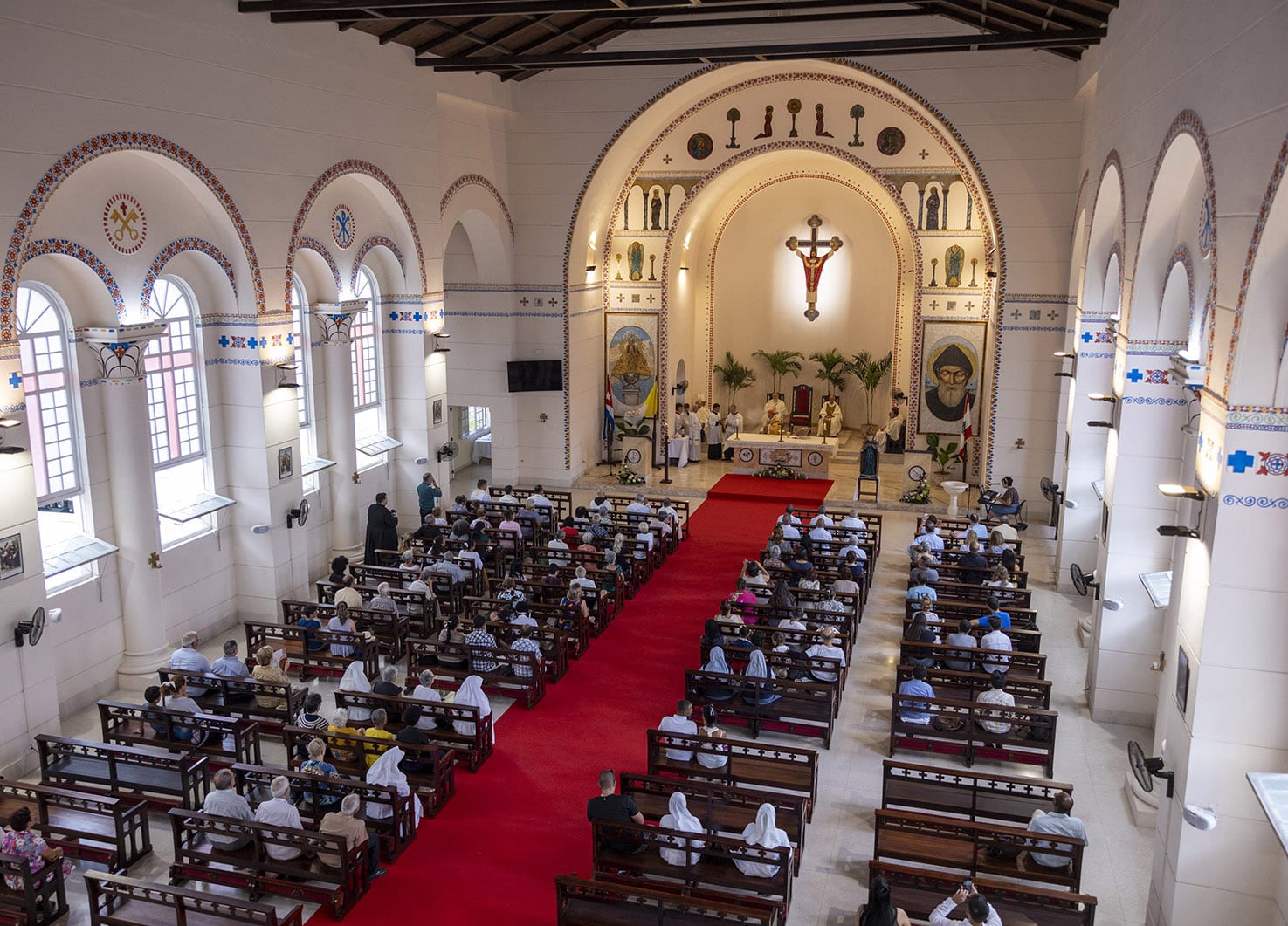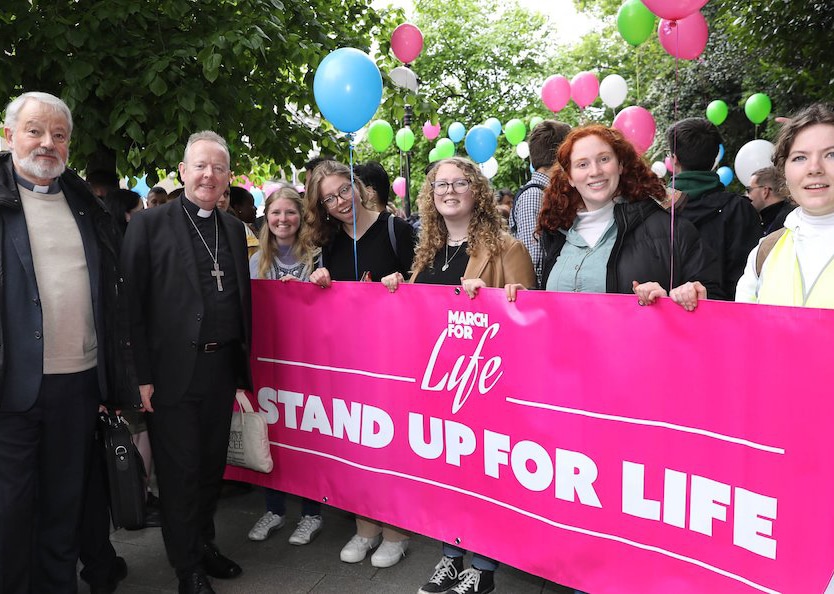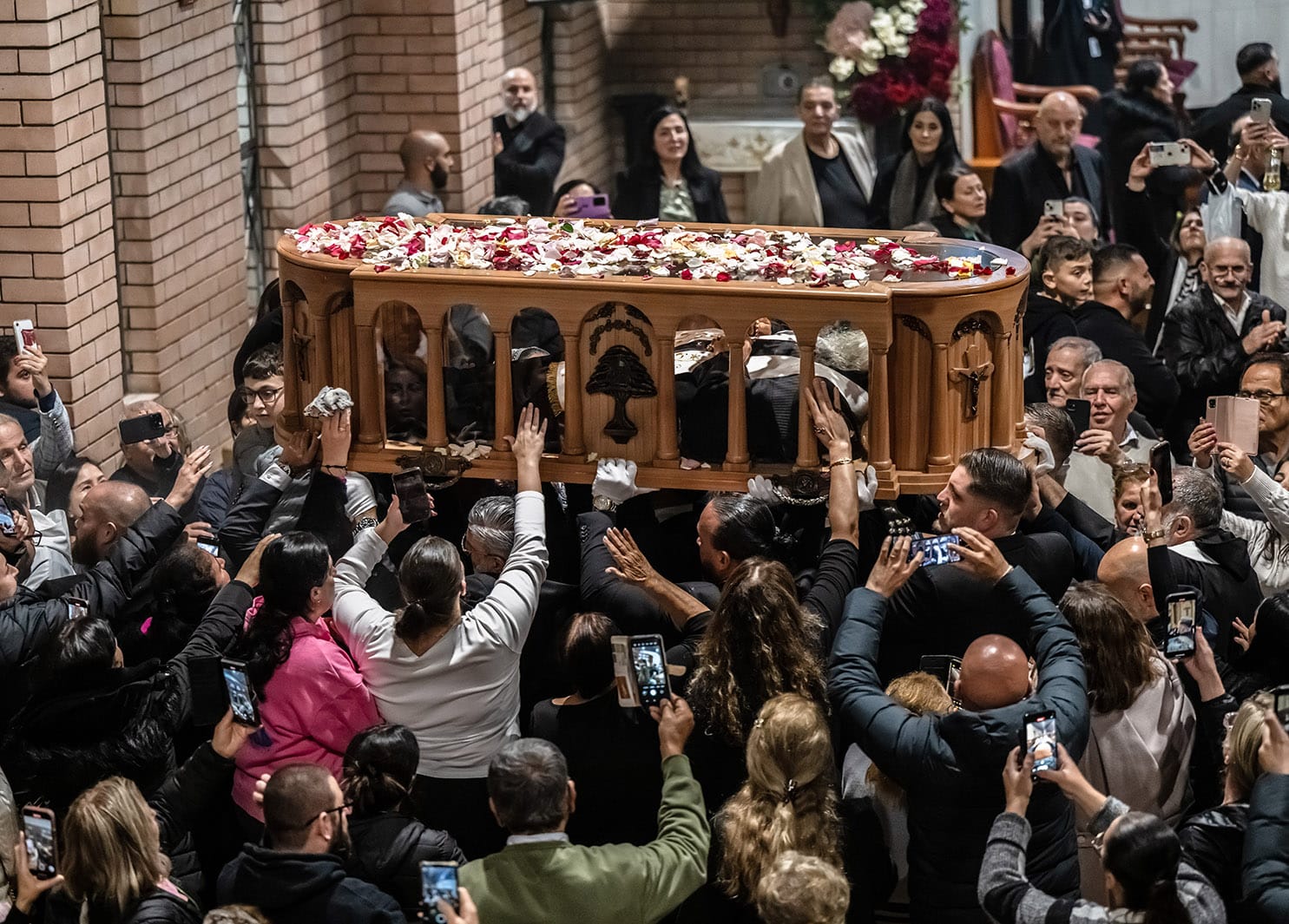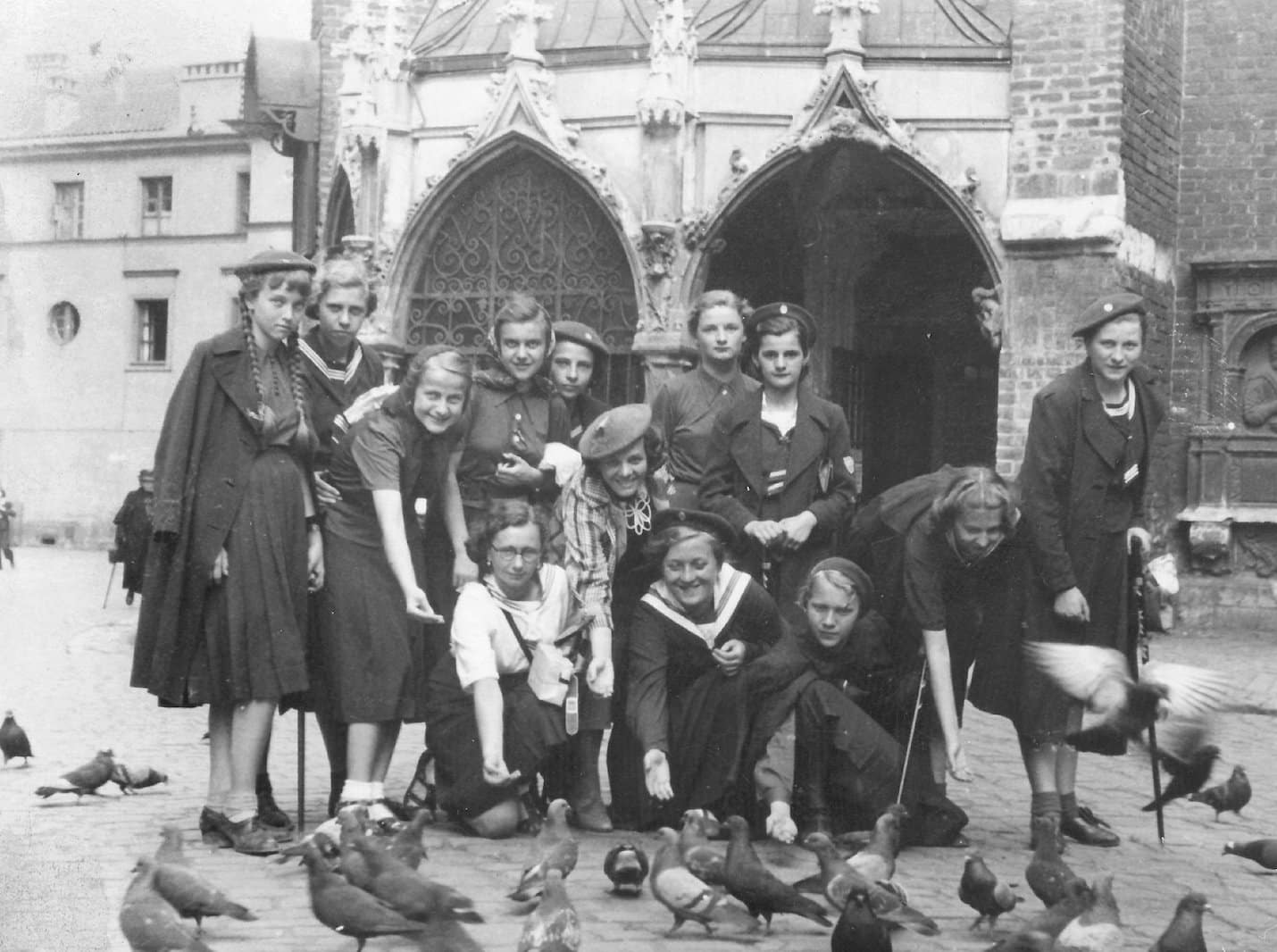MIAMI (OSV News) — What some are now calling the most beautiful church in Cuba is a newly restored Catholic university chapel in Havana abruptly abandoned during the Cuban Revolution and in disuse for some 60 years.
A half a century has passed since local students walked the grounds of Santo Tomás de Villanueva campus, and since a Mass was celebrated in the student chapel, situated in one of Havana’s suburban districts. It was founded in 1946 by the American-based Augustinian religious order with assistance from European Augustinians.
Now, with support from the U.S.-based Catholic Extension Society and private donors here and abroad, the old Santo Tomás de Villanueva chapel has been fully restored and reconsecrated as Santo Tomás de Villanueva and San Charbel Parish.
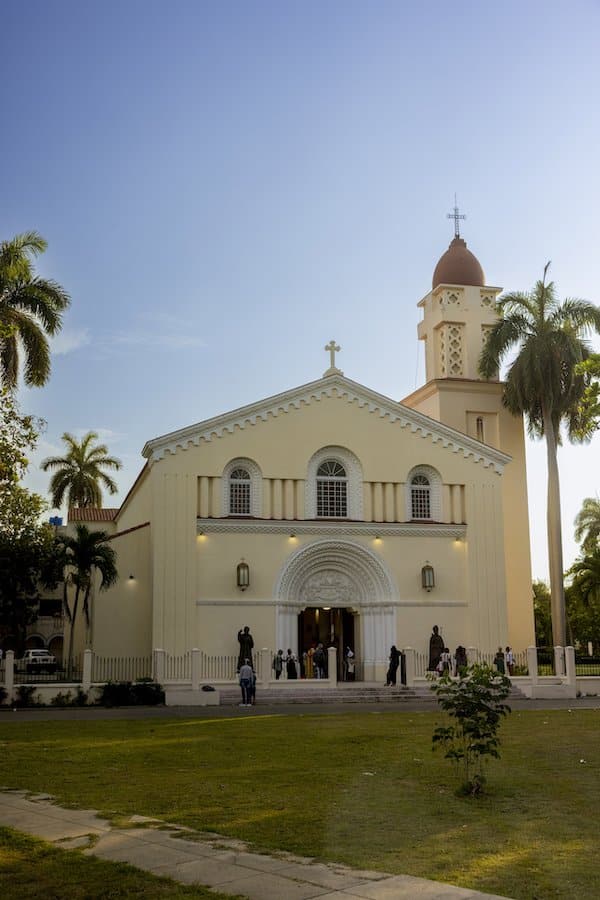
Dedication ceremony of Havana chapel
A delegation of bishops and clergy from the United States, including Miami Archbishop Thomas G. Wenski, traveled to the Miramar district of Havana for dedication formalities at the end of April following a years-long planning process to restore both this chapel and a number of other decaying churches around Cuba.
More than a decade ago, the chapel was returned to the church after serving as a small storage facility for the Cuban government.
“I visited this chapel several times since then, and it was pretty much in ruins – with the statue of St. Thomas — without a head — still standing in front of the abandoned and unmaintained temple,” Archbishop Wenski said in his homily at a Mass of thanksgiving April 24 at the chapel.
“This renovated and restored chapel becomes once again a beacon of light to all who pass by,” the archbishop said, noting that Santo Tomás de Villanueva University was later established as St. Thomas University, now an archdiocesan-affiliated college in Miami.
“We thank the Catholic Extension Society, which has supported projects throughout Cuba, and they were able to make this work possible through the generosity of Father Patrick O’Neill, former president of St. Thomas University in Miami and (who) was previously a member of the Augustinian founders of Santo Tomás de Villanueva University.”
Archbishop Wenski was joined in Havana by Father O’Neill; Cardinal Juan de la Caridad García of Havana; and Havana Auxiliary Bishop Eloy Ricardo Domínguez Martínez.
Renovation efforts
Plans to renovate the campus chapel followed the 2015 visit of Pope Francis to Cuba, when a small Miami delegation of pilgrims and St. Thomas University faculty toured the shuttered campus property and wondered whether it could be restored to serve the community.
At the time, the church was nothing more than a few walls and a mostly exposed ceiling, with little to no remaining furnishings, windows or religious art apart from damaged statuary.
Only the old altar — its position an indication of a pre-Second Vatican Council layout — and depiction of saints and other religious artwork high over the arches confirmed that this was once a church.
Augustinians expelled by Castro
When the Castro government expelled the Augustinians from Cuba in 1961, several of the American Augustinians removed the Eucharist from the chapel and came to Miami to found Biscayne College, a men’s college.
The school earned university status in 1984 after the addition of 10 master’s degree programs and the opening of the law school. When university status was attained, the name of the institution was changed to St. Thomas University to reflect its Cuban heritage.
The university came under the sponsorship of the Archdiocese of Miami in 1988, conferring upon St. Thomas the distinction of being the only Catholic archdiocesan-sponsored university in the southeastern U.S.
A reminder of a turbulent past
Miami’s Father O’Neill noted that the Catholic Extension Society has a long-standing mission of lending support to poverty-stricken Catholic communities — but that this project in Cuba was among their first projects outside of the United States.
Catholic Extension Society, based in Chicago, is a 119-year-old organization that funds and serves the country’s poorest mission dioceses.
“They came down seven years ago and drove through eight dioceses in Cuba in one day to get a look at the needs there,” Father O’Neill told Florida Catholic, the news outlet of the Archdiocese of Miami.
“Extension Society went regularly to check on progress,” which was slow given the difficulties of sourcing materials, he added. “There was no parish in that area, those walls had been used for a storage facility.”
The priest said he took interest in the project as a labor of love and one which honors his heritage as a former Augustinian priest educator and university president. His own parents had also been supportive of the original chapel’s founding.
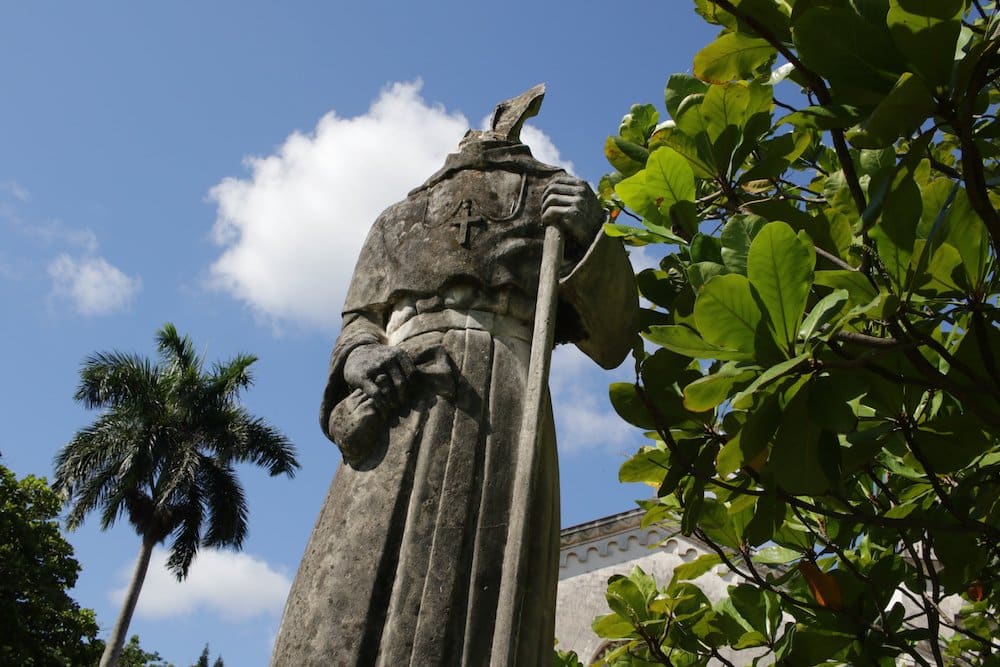
The priest noted that a decision was made to leave the headless statue of St. Thomas Villanova unrepaired on the property as a reminder of the turbulent past; it is now joined by a new statue of the 19th-century Maronite hermit St. Charbel.
Father O’Neill said that a small Maronite Catholic community of Middle Eastern origin once lived in Havana and that a Maronite Catholic bishop in Mexico has taken an interest in supporting the new church, which now serves the community near Havana’s embassy district.
The most beautiful church in Cuba
“The (Havana) cardinal told me this is probably the most beautiful church in Cuba now,” Father O’Neill said, noting that a new church stands in stark contrast there given the lack of structural upkeep apparent across the impoverished island nation.
Small donations from abroad helped finance the project at a time when Cuba’s economy continues to fail due to Cuban government policies, ongoing trade sanctions and the fallout effects of the COVID-19 pandemic.
Also traveling to Cuba from Florida were Miami Auxiliary Bishop Enrique E. Delgado, Father Rafael Capo, vice president for mission at St. Thomas University, and David Armstrong, president of St. Thomas University.
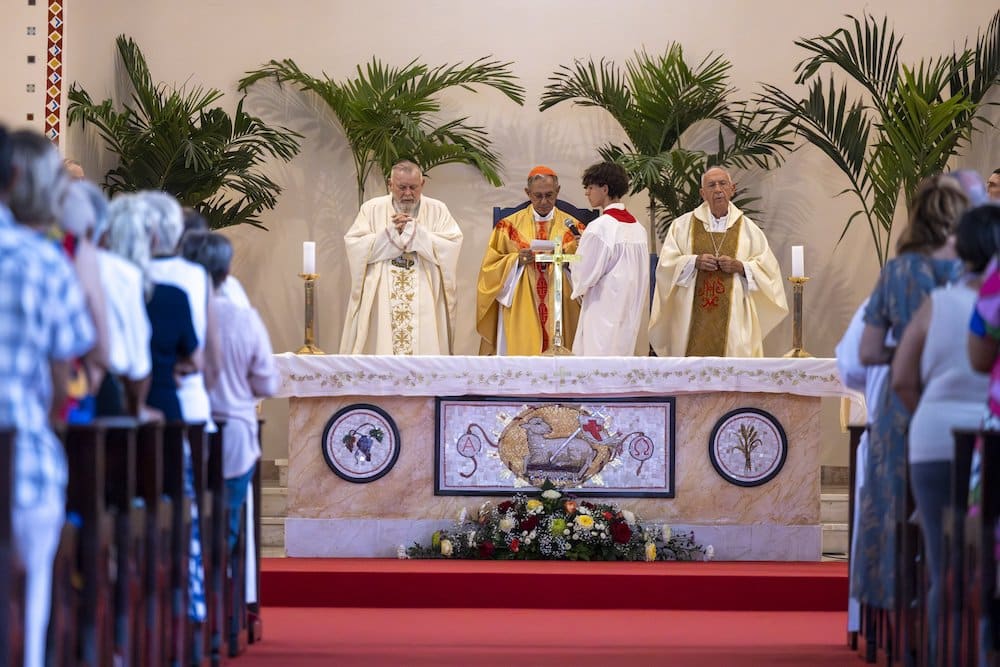
A beacon of faith
“Faith in Jesus Christ is a light that dispels the darkness — as we prayed in the paschal vigil. May this chapel be a beacon of faith, and renewed hope for the people of Cuba, and help them to know that for God, nothing is impossible,” Archbishop Wenski said in his homily.
“We make our prayer the prayer of Pope Benedict XVI when he visited in 2012,” he added, quoting the pope:
“Cuba will be the home of all and for all Cubans, where justice and freedom coexist in a climate of serene fraternity. Respect and promotion of freedom, which are present in the heart of each person, are essential in order to respond adequately to the fundamental demands of his or her dignity and, in this way, to build up a society in which all are indispensable actors in the future of their life, their family, and their country.”
Tom Tracy is a correspondent for Florida Catholic, the news outlet of the Archdiocese of Miami.

